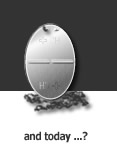Emergence
The in 1845 invented and in the following years strongly improved bicycle was at about 1870 also discovered by the military as a mean of transport very efficient and also economic. Thus numerous armies in Europe introduced the bicycle at their troops starting from 1885. In the early nineties of the 19. century also the U.S. Army's 25th Infantry Bicycle Corps and parts of the Japanese army were equipped with military bicycles. 1891 also Swiss Upper House of Parliament agreed with the creation of a cyclist branch in the army. In the beginning the very small groups consisting of max. 15 men had to bring in their own bicycles for their military service. A practice which was very popular at that time. Also the cavalry troopers had to provide their military service with their own horses. The army command expected by this regulation, a better care for their own "driving machines" than it would have been given to bicycles lent by the state.
World War I
During the general mobilization in August 1914, already 14 cyclist companies were called to their troop collecting points in Switzerland. During the period of the war the tasks of the cyclists changed completely, because ot the use introduction of field telephones, from pure despatch riding to the exercise of real combat missions.
In World War II
World War II was also for the swiss cyclists drawn from monotonous maneuvers, the constant uncertainty and the worries about the families at home. Those often long waiting periods were only interrupted by numerous relocations particularly in the second war half. With the duration of the war particularly the shortness of vulcanised rubber became a serious problem for the cyclist corps. The ever more restrictively handled delivery of tires led to many breakdowns during rides and culminated finally in the order to march shorter distances on foot.
Post-war period
For the cyclist troops the army reform in 1961 has brought the assumption under the mechanized divisions. By the dissolving of the last cavalry units 1972, a bigger attention came to the 9 cyclist batallions. At the beginning of the ninteennineties the evaluation of a new, up-to-date bicycle became the topic. The new military bicycle 93, which was actually only delievered to the troops off 1995 was the cause for a generally recognised increase of speed during rides. The 7-speed gear change, framework geometry as well as the straight handlebar brought an harmonisation with the civilian well known mountain bikes.
| |
Source:
Schweizerische Militärradfahrer
Robert Gubler
Published by: Neue Zürcher Zeitung, Zürich 1993 |
|
|






